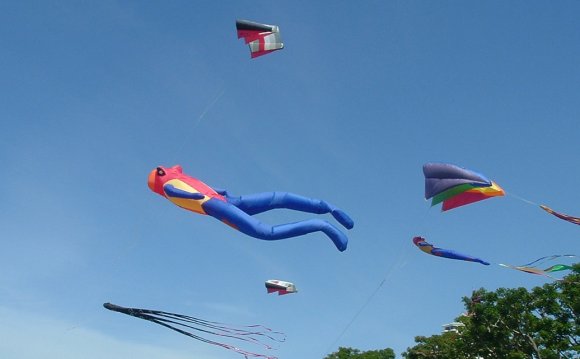
 Kite flying can be great fun for people of all ages! But getting your kite soaring high up in the air can be quite a challenge. These amazing kite flying tips and tricks will not only help you get your kite up in the air, but also enjoy this hobby immensely.
Kite flying can be great fun for people of all ages! But getting your kite soaring high up in the air can be quite a challenge. These amazing kite flying tips and tricks will not only help you get your kite up in the air, but also enjoy this hobby immensely.
Choosing a kite
The very first thing to do is to choose the right kite. Many kite fliers carry with them different types of kites to suit different winds. Every kite offers a different kite flying experience. Your kite needs to be assembled properly, or else it might not fly.
In light to medium winds, diamonds, deltas and dragon kites fly the best, whereas stronger winds are more conducive for stickless Parafoil kites and box kites.
Picking the perfect day for kite flying
We don't really have control over the wind we have to pay special attention too perfect kite flying conditions. Winds that are too light or too strong are difficult to fly a kite in. A flag is handy tool to gauge the wind. Most kites fly best in winds that range between around 5-25 mph. Medium winds are the most fun for kite flying. These winds allow you to make your kite dance along the sky as you let out the line and reel it back in. If your kite is diving and looping while you are pulling hard on the line, try letting out line. If that seems to steady it temporarily, the wins may be too strong. You can add some extra drag by adding a tail. If your kite is wobbling and fails to climb unless you keep pulling in the line, the wind maybe too light. Never fly when it is raining or if there it is lightening. Damp kite lines attract the electricity in clouds and you may get hurt.
Picking the right place to fly your kite
As important as it is to pick the right kite and the right weather conditions, it is just as important to choose the right place to set your kite to soar in the sky. An open area with no trees is the best place to fly your kite. Buildings or trees upwind are known to cause ground turbulence, which makes your kite hard to launch. These obstacles can also cause turbulence which attracts kites, if downwind. Hills are usually great places for kite flying. To avoid any turbulence created by the hill itself, be sure to stand on the windward side.
Getting your flying line ready
Use the slip knot technique to attach the line to your reel. A snap swivel keeps tangles out of your line and makes it easy to connect to your kite. Use the clinch knot technique to tie your line to your swivel. Use a bowline knot technique to tie your line to your kite if you don't have a swivel.
Getting your kite ready
Most kites are ready to go and don't have to be assembled, only fastened to the line. But there are some kites like box kites, which tend to be a bit more challenging to assemble. Usually, they come with instructions, so read them well while you are putting them together.
YOU MIGHT ALSO LIKE










